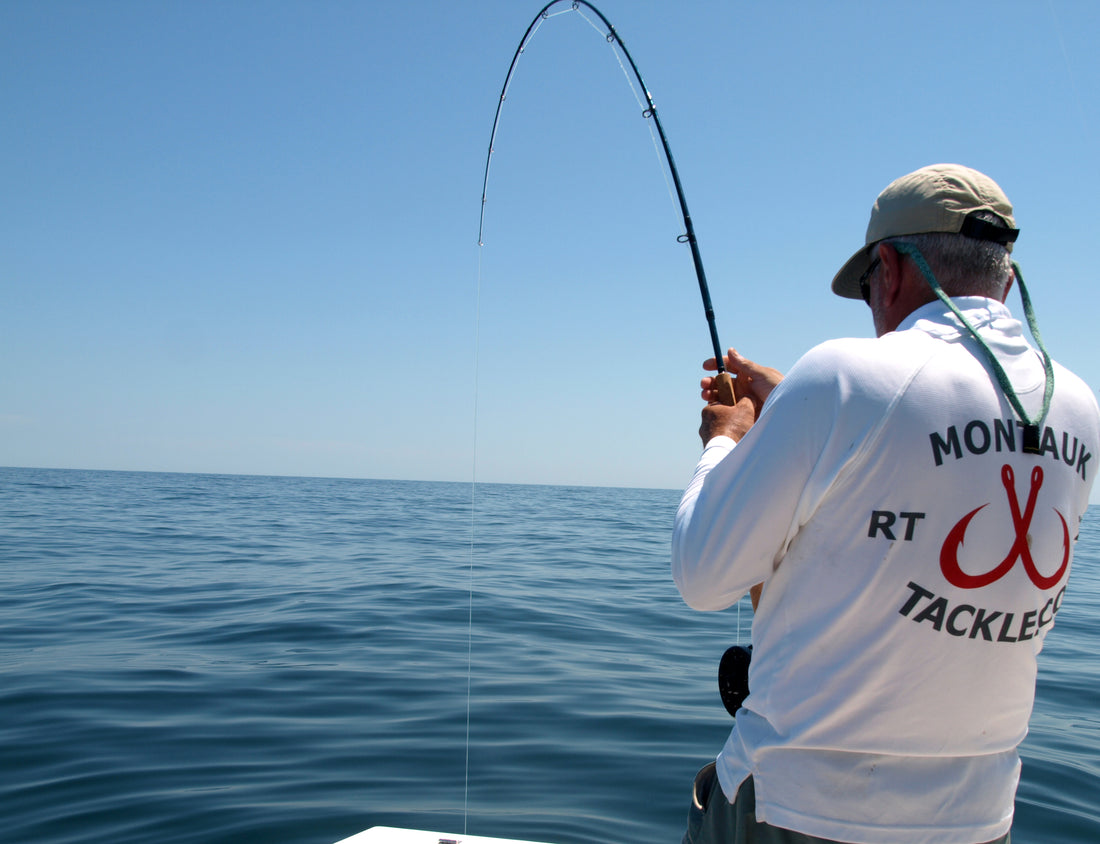Written by Angelo Peluso
Montauk, New York is a small Long Island town with a big fishing reputation. It is also the eastern-most point of New York State. But beyond those notable distinctions, the village's most prominent feature is the Montauk Point Light, which was the first lighthouse in New York State, and the fourth-oldest active lighthouse in the United States. Montauk Light was also the first public works project in the U.S., authorized in 1792 by the Second United States Congress under President George Washington. Yet beyond all else, Montauk is renowned for the quality of its inshore and offshore fishing. Most notable among the angling community are Montauk's surf fishing, where it is considered a fishing "Mecca" of sorts, and the amazing migratory phenomenon known as the "fall run". This latter event is one that light tackle and fly anglers far and wide have come to anticipate with an eagerness that borders on obsession. Striped bass, bluefish and false albacore literally invade the point for weeks on end during the fall. Drawn there by massive amounts of baits such as sand eels, spearing, whitebait and bay anchovies the fall run is a sight to behold and an experience not to be missed. It is a truly amazing wonder of nature.
Montauk’s popularity has grown dramatically with the influx of tourists from around the country and around the world. But despite that increased visibility, Montauk’s fishing can be as good as it gets anywhere along the East Coast. And beyond the surf and the fall run, there is another fishery that draws its own share of passionate devotees: Montauk’s mixed bag. Let's explore that exciting alternative and how you can experience it.
I was fishing with some friends many years back as we motored out from Montauk Harbor and headed south toward The Point. Our expectations were high for encountering late summer striped bass and early arriving little tunny, albies as they are more colloquially called. As is often the case, Montauk did not disappoint. At about three-quarters the distance to the Lighthouse we bumped into our first pod of albies that were marauding through large rafts of diminutive rain bait. The unmistakable reddish hue of the bay anchovies blended with the iridescent blue-green and white forms that fed voraciously. The albies were happy and it didn't take long for all on board to hook up. This kind of frenetic, light-tackle activity continued as we moved from one group of tunny to the next. It was already a good day and we had just gotten started. As it turned out, the albie action didn't subside at all that day. The activity was strongest around the peak periods of tidal current but these inshore pelagic speedsters fed throughout the entire time we were on the water. A few moderate schools of mid-sized striped bass provided for a welcomed change of pace from catching the hardtails.

As we alternated between casting to albies and bass something unexpected had happened during a slow period of the tide. The boat drifted slowly along the south side of The Point and a few hundred yards offshore. Taking a short break from the casting a friend and I began to discuss the balance of our fishing day as we allowed our epoxy jigs to bounce enticingly along the bottom. Shortly thereafter both rod tips trembled as we set hook on two well-proportioned black sea bass. But those weren't the only two fish that our jigs fooled. A glance at the fish finder revealed that the lower level of the water column was littered with bait and larger "marks". Those marks turned out to be much more quality sea bass. We tried that drift several more times and continued to play with feisty bass, keeping a few for the table. With the afternoon tide not yet ideal for the rips to build to a point where the striped bass and albies would once again feed aggressively, we moved farther down the shoreline and to an area adjacent to a sand beach. There we drifted bucktails tipped with scented soft plastic baits. Fluke was now our targeted species and we didn't have to wait long for the first of several takes by keeper fish. At this point in the day striped bass, bluefish, albies, sea bass, and fluke had come over the gunwales. But we weren't yet done with variety. After catching our fill of summer flounder, we eyed a small fleet of boats clustered about three-quarters of a mile offshore. Those boats were on schools of scup, porgies by their more common name. We decided to join them to further round out our day's catch. And catch porgies we did. These delectable saltwater panfish were plentiful, feisty and rather large specimens for their species. The fact that they were receptive to small artificial jigs and bucktails made the catching even more enjoyable on light tackle.

As the tide began to gain momentum, we moved off from the scup grounds and motored back closer to the points and resumed catching both striped bass and false albacore that had once again begun to feed actively. Although those species were the initial objective of our outing, the variety of other fish that were available made for most divers and complete day. While the striped bass has been the calling card of the waters around Montauk, the diversity of available species is what also attracts many anglers to this eastern-most point of Long Island. The variety of fishing opportunities that Montauk offers is a hallmark of the fishery. Mixed trips for different species are a wonderful way to enhance a day on the water and hone one's angling skills. So, consider giving the Montauk’s Mixed Bag a try. You will definitely enjoy that experience and want to return to “The End” for more.
Written by Angelo Peluso

